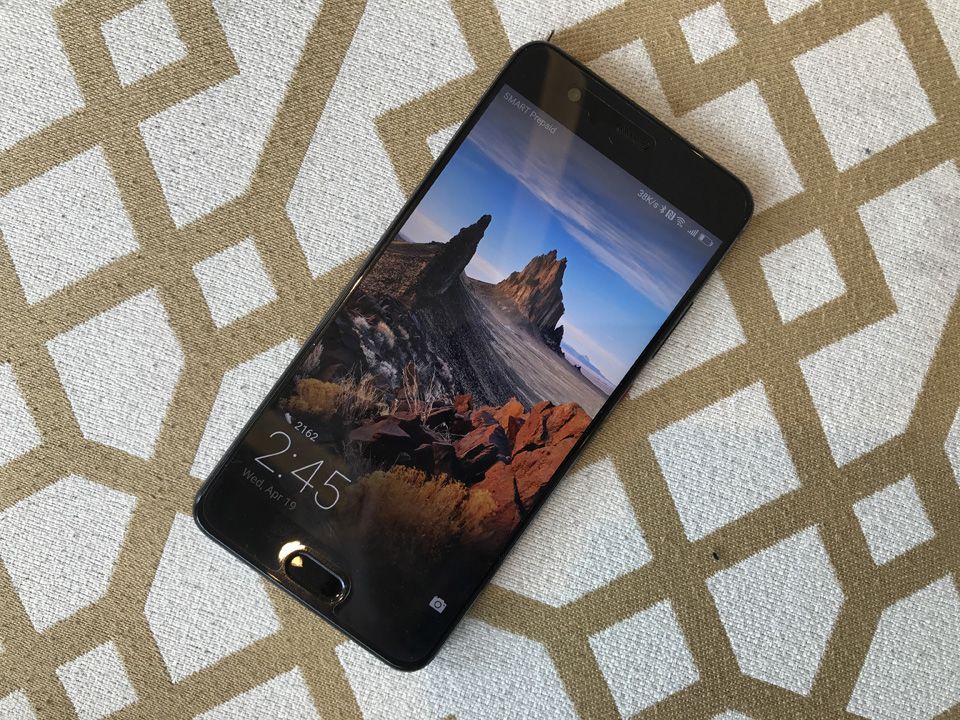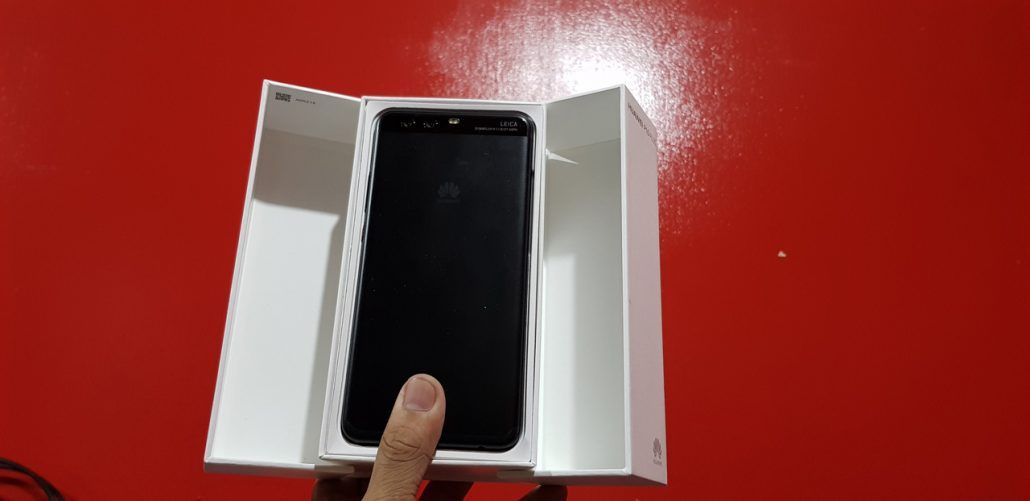
A dual camera phone setup is the solution to the limiting space of a smartphone since manufacturers can’t increase the sensor size due to constrictions, they opted to put two cameras to make use of more information.
As a result, the Huawei P9 was the most successful dual-camera phone for 2016 and revolutionizing the trend. This 2017, the momentum continues with the P10 with a much more refined effort to stay ahead with the increasing dual-camera arena. But will it be enough? Here is our partial review of the Huawei P10 Plus.

We will get this out of the way, the P10 looks and feels like an iPhone, especially with our black review unit. Huawei’s overall approach to the P10 is more of a class upgrade from the P9 with a more premium body, screen, and even internals.

The P10 has a rounded corner body that feels nice to hold along with the matte aluminum body. We can say that the P10 is one of the nicest metal body smartphones today, there aren’t any annoying carved metal lines as the antenna is near the camera lens and at the bottom curving the chin area.

The screen is a 5.5-inch WQHD display, Huawei finally levels up their game with a 2k screen for the P series as the P9 was using FHD. But they opted to use IPS this time instead of AMOLED, perhaps this is due to unity with the smaller P10 and even to produce more accurate colors.
In direct sunlight, the screen slightly struggles to give you decent visibility, but the P10 Plus still has good colors, contrast, and slightly cool favorable temperatures. We like that the brightness settings can be lowered enough for decent pitch black time viewing.

At the bottom are the speaker grill, microphone, USB Type-C slot and 3.5mm audio jack. Yes, the audio jack is still possible on a 7mm body Apple and my I’m not seeing any other brand following their “Courage”.
 Both phones may have a “Plus” in the name, the Huawei P10 Plus is obviously smaller in footprint as compared to the iPhone despite having the same screen size. Huawei’s approach of a smaller bezel kicked off as the P10 Plus feels smaller, but there aren’t any curved screen here but more of 2.5D glass.
Both phones may have a “Plus” in the name, the Huawei P10 Plus is obviously smaller in footprint as compared to the iPhone despite having the same screen size. Huawei’s approach of a smaller bezel kicked off as the P10 Plus feels smaller, but there aren’t any curved screen here but more of 2.5D glass.

Even the home button is nice with a tactile feel and red accent colors for the difference with the volume toggles. These small detail to attention is what we love about the P10.
Still, the P10 Plus or P10, in general, is a nice smartphone to hold but not amazingly impressive. Huawei’s approach in the aesthetics is great but not innovative if we should summarize it.
We rarely talk about the box but this one is an exemption as the packaging of the P10 is quite different. You will have to open a drawer type box closed by magnets, the feeling of opening a cabinet makes it premium and even more intriguing.

Inside are the special SuperCharge USB-Type C cable, Huawei Earphones, Adapter, Cable, Charger, and a unique hard plastic case for the Huawei P10 Plus. A screen protector is already included and pre-installed in the packaging.

Huawei P10’s earphones is a bit familiar to the look, it’s similar to Apple’s earbuds as they have the same implementation. We just think that Huawei’s earphone lacks bass as compared to regular earpods and you’ll have to tweak the equalizer to resolve it.
The Huawei P10 Plus has an Octa-Core Kirin 960 processor, Huawei’s implementation of their own processor has helped them with optimizing performance. The equivalent processor will be in the middle of a Snapdragon 821 to 835 SoC, but the P10 Plus has the whooping advantage of a 6GB RAM.

But the question is that…do you even need a 6GB RAM? While it might sound outstanding to own a 6GB smartphone, we weren’t able to feel the need for it as the unit ran smoothly. But perhaps the extra 2GB is more for buffering instead of speeding up performance, nevertheless its more assuring you have such RAM to accommodate even the longest list of apps available.
What’s impressive with the P10 Plus is the 128GB internal storage, we think its more than settling that you won’t have to delete any photo soon with that storage. As the phone’s target are photo enthusiasts, we think it’s nice that Huawei opted on this decision for an edge even to their top competitors.
Eyes are all-in for this 2nd generation dual-camera setup certified by Leica, Huawei not only used bigger sensors and smaller apertures but also refined the software.

Huawei’s HDR mode lets you pick a certain area to balance the lighting and focus on a different subject. The method is a bit complicated but we now know why Huawei is the preferred smartphone for photography enthusiasts.
Shooting with the P10 Plus is excellent, we admit to ourselves that we aren’t any PRO in using the manual settings, so all you see are based on the auto settings of the camera. But the results are still stunning nevertheless, colors are accurate with a hint of vibrancy even at low light or artificial lighting condition. Sharpness is above average while the dynamic range is spot on, the monochrome / RGB sensor technique just marries the best of both to crisp detail possible.
Selfies using the P10 Plus is also a delight, the details are good while still implementing the beautification feature. There is even a portrait mode for both front and back to produce better lighting results in your face, this enhances the dramatic effect of your photos given the proper conditions. Just have a steady hand as always and you will do fine.
Huawei’s UI is now less black and white and added a favorable blue hue for highlights, they also cut down steps in activating some actions to two or even one step in their optimization. Everything is clean and neat for Huawei and we applaud them as it compliments the phone’s look and even the target audience.
With the home key now at the front, Huawei now lets you choose two modes should you want to use the static home button or use the navigation on-screen buttons. For us, the home button is something there for a reason and it’s a waste not to use it. Plus, we always tend to press the home button always by mistake, so we opted to use it permanently.
Just remember that there is a small learning curve should you prefer using the static home button. Swipe left or right for the multi-tasking, press once for back and hold for home.
One feature the P10 has over other flagship smartphones today is the IR blaster and Huawei’s software for this is extraordinarily amazing. Huawei’s list of remote IR blaster partners extends to TV Boxes, Airconditioners, DVD Systems, and more. We even get to control our old Carrier aircon at home which was way back early 2000’s.

While other manufacturers have this like LG, their list of brands is VERY limiting to major brands and just favors their own appliances in our comparison.
The P10 Plus has a 3,650mAh battery, in our experience, this translates to around 13 hours of moderate use in a day. So leaving 8 am from home will still leave you around 10-15% once you get home at around 9 pm.
Huawei told us that the software when we used the P10 Plus and will still come with better efficiency in the performance and battery, so let us know if you get more than 13 hours in your P10 Plus.

Huawei’s quick-charge technology is called “Super Charge”, it’s Huawei’s own technology as they are not using Qualcomm chips. Charging is ridiculously fast at full in 1 hour but the only disappointment is that a special cable and charger head must be used.

The P10 Plus comes with a USB Type-C cable that has a special violet plate to distinguish itself as a Supercharge cable. There are extra pins in the cable that enables the Huawei Supercharge to bring more ampere and voltage without sacrificing the unit’s integrity for charging.
So this means that the quick-charging technology is kinda exclusive to its own and you’ll have to carry the cable and charger with you should you need to charge fast.
As with any phone, there are drawbacks that might hinder you from purchasing it. For the P10 it’s more of minimal problems honestly. The screen doesn’t have an oleophobic coating both in the screen protector and glass, so just go to a local store to buy a nano-coating which should cost around 200-300 pesos.

Huawei made sure that the P10 will also the exclusive VIP service that P9 users loved. These are assurance that you are partnering with a brand that not only produces great phones but also thinks of your journey even after purchasing.
All of these is like having an insurance for your phone for 1 year, something very valuable and won’t even cost additional or participation fee. We think this is a great offer that is valued around Php5,000+ easily.
Overall the Huawei P10 is clearly focused on experience rather than aesthetics, it isn’t innovative in one look but more of a refinement. The tale of the Leica camera of the P9 will continue further with the P10 and it’s amazing camera and for sure you’ll hear of it anytime soon.

While the P10 Plus retails for Php36,990, you might call it steep as it’s just a bit short to the Samsung Galaxy S8. But that isn’t the main point to argue for us, only Huawei right now can offer an unparalleled advance smartphone camera photography experience to consumers and that is their core strength. The triple Leica certified camera setup is definitely a gem and enough of a reason to get one if you are serious about the quality of your photos.
It’s the only 6GB RAM, 128GB internal storage in its price point, outstanding warranty coverage and plus…you get an IR blaster should you really need one that makes the P10 Plus unique.
Should your budget be short, you might want to consider the smaller brother P10 that is even free at Globe for Plan 1799. In our computation, the total cost is even cheaper than buying one in retail stores.
Should you get one, it’s also available via Globe’s Postpaid plans which are quite tempting for its price.
The last one, we highly suggest to get the limited edition blue or green colors should you get one. It has a special tactile feel at the back that makes it even better to hold and it looks nice.
